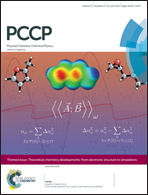First principles study of magnetoelectric coupling in Co2FeAl/BaTiO3 tunnel junctions
Abstract
Critical thickness for ferroelectricity and the magnetoelectric effect of Co2FeAl/BaTiO3 multiferroic tunnel junctions (MFTJs) are investigated using first-principles calculations. The ferroelectric polarization of the barriers can be maintained upto a critical thickness of 1.7 nm for both the Co2/TiO2 and FeAl/TiO2 interfaces. The magnetoelectric effect is derived from the difference in the magnetic moments on interfacial atoms, which is sensitive to the reversal of electric polarization. The magnetoelectric coupling is found to be dependent on the interfacial electronic hybridizations. Compared with the Co2/TiO2 interface, more net magnetization change is achieved at the FeAl/TiO2 interface. In addition, the in-plane strain effect shows that in-plane compressive strain can lead to the enhancement of ferroelectric polarization stability and intensity of magnetoelectric coupling. These findings suggest that Co2FeAl/BaTiO3 MFTJs could be utilized in the area of electrically controlled magnetism, especially the MFTJ with loaded in-plane compressive strain with the FeAl/TiO2 interface.


 Please wait while we load your content...
Please wait while we load your content...